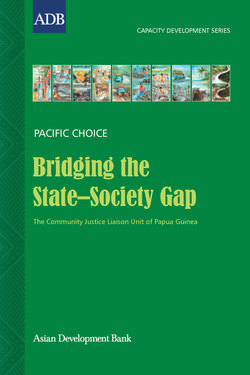Читать книгу Bridging the State-Society Gap - Tom Seta - Страница 7
На сайте Литреса книга снята с продажи.
BACKGROUND: THE PAPUA NEW GUINEA CONTEXT
ОглавлениеWith a population of around 5.7 million, Papua New Guinea (PNG) is the largest Pacific island country, both in land area and population size. It is difficult to generalize about the people and culture of PNG because 800 languages are spoken and traditions and customs vary greatly across the country. The people traditionally lived in small, self-regulating communities, and before colonization in the late 19th century were not aligned with or subject to any overarching system of laws and governance. Although these communities sometimes interacted for the purposes of trade, intermarriage, or warfare, they remained largely isolated from each other.
Since its independence from Australia in 1975, PNG has emphasized building a shared sense of national identity among its people. However, the primary allegiance and identity of most Papua New Guineans remain defined by their local kin-based group and wantoks.[1]
Most or 85% Papua New Guineans live in rural areas, subsisting on agriculture, forestry, and fishing. They have little access to the police or the formal justice system and are largely beyond the reach of government services, including education and health care. In fact, the largest service provider in PNG is not the state, but the Christian churches. The strain on overstretched, under-resourced government services has been made worse by rapid population growth, with the population almost tripling since independence.
According to the 2005 United Nations Development Programme‘s human development index, Papua New Guinea ranked 137 out of 177 countries—the lowest rank of any Pacific island country. Other development statistics reinforce this rather bleak picture: life expectancy is 55 years and average adult literacy is 57%, with female adult literacy around 51%. Only 5% of those who left school in 2002 found employment in the formal sector.
